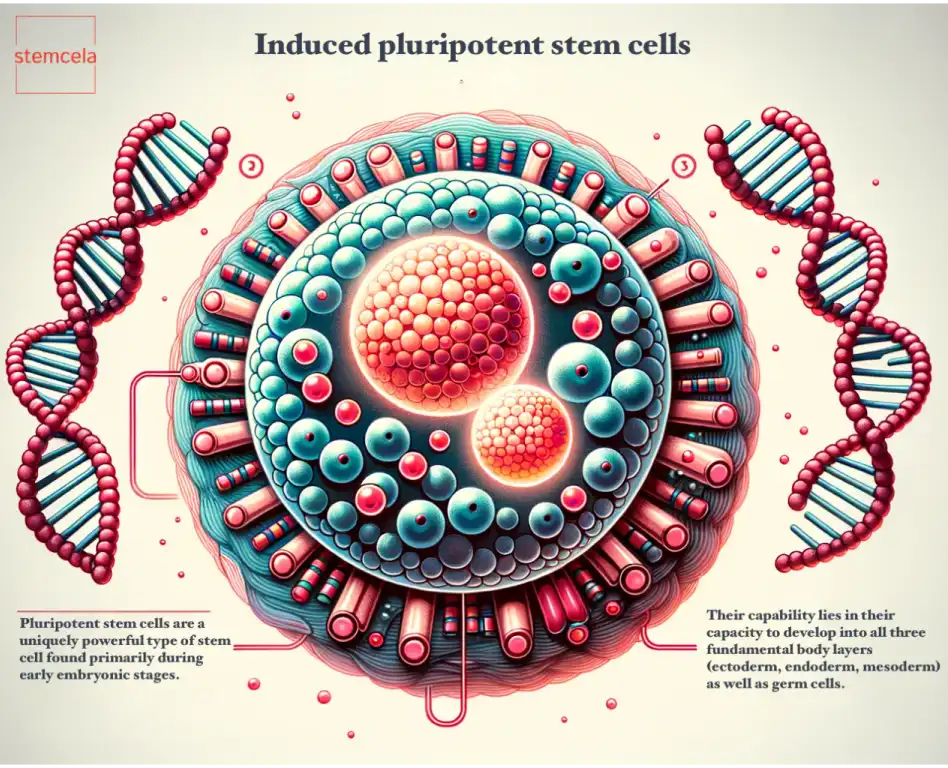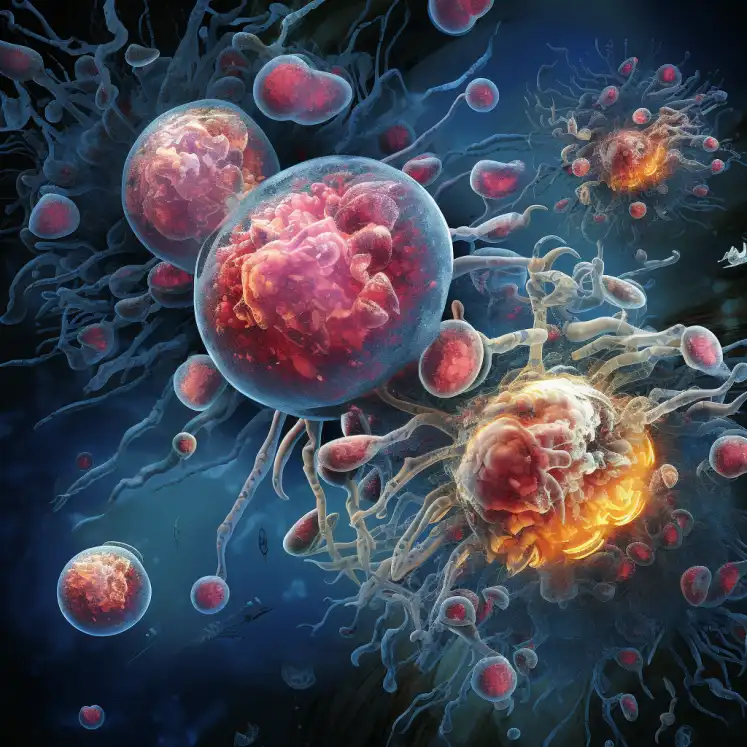What is the most amazing feature of stem cells and particularly multipotent stem cells? They have a unique ability to differentiate (or simply develop) into a great variety of cell types with particular purposes and functions. They can literally sense chemical signals that urge them to move into the tissues that were damaged and start the process of differentiation. As a result, they heal damaged cells or replace the dead ones.
Various stem cell types have different abilities to develop into a greater or lesser variety of cell types; this fact determines their differentiating potential. To date, bioengineers have discovered several cell types with various features: multipotent, totipotent, pluripotent, and unipotent.
Now we will have a closer look at these stem cell types, analyze their features, and the prospects of using in contemporary medicine.
Multipotent stem cells
Multipotent stem cells can grow a whole organ or several tissue types. In fact, they can turn into a fairly wide variety of specialized cell types (but not into every type of them): they can mature into various blood cell types, liver or brain cells.
For instance, numerous stem cell research studies have proven the fact that a blood cell is multipotent. It can create about 20 various types of cells in our immune system.
If you transplant one of such blood cells into a body of a mouse that does not have a blood-forming (hematopoietic) system, then the animal will be able to completely recover hematopoiesis! This type of cell remains (just in case) in some depots of our body until old age. The bone marrow is one of such depots. Learn more about Hematopoietic Stem Cells.
How multipotent stem cells are used in medicine?
Mesenchymal multipotent stem cells (MMSCs) are successfully used to treat diabetic foot (a serious complication of diabetes mellitus, in the restoration of epithelial cells of the skin), for treating various disorders of the musculoskeletal system (joints, in particular).
The features of MMSCs are constantly being studied and every year, bioengineers are discovering their new abilities to turn into other cells and tissue types. The most promising and important area of the clinical use of MMSCs is co-transplantation along with hematopoietic (blood-forming) stem cells for improving the engraftment of a cord blood or bone marrow stem cell sample.
Numerous studies have shown that human MMSCs can avoid rejection during transplantation, and are able to interact with dendritic cells and T-lymphocytes.
Where are MMSCs found?
The main depot of adult stem cells in our body in the bone marrow.
- MMSC’s natural niche is perivascular tissue, located around blood vessels.
- The other source is adipose tissue and other types of tissues with good blood supply.
- In addition, MMSCs can be found in the milk teeth pulp, amniotic fluid, umbilical cord & umbilical cord blood, and Wharton jelly.
Are adult stem cells multipotent?
These cells, as well as cord blood stem cells, are considered multipotent.
Totipotent stem cells
Totipotent stem cells (TSC) can grow a full-fledged organism and form all cell types (about 300 of them), that were discovered so far.
How can TSC be used in medicine?
We can benefit from using embryonic totipotent cells in new areas of regenerative medicine, and treatment of malformations of the embryo and miscarriages.
Are embryonic stem cells totipotent?
First, you should know that the human pluripotent stem cell is a descendant of totipotent cells. At the stage of the initial development of an embryo, when a blastocyte is formed, its cells are totipotent.
At this stage, the cell carries information about the ways of how to combine the future fetus (if it successfully passes all the stages of “quality control”) with the mother’s body, and all the instructions for the formation of a new life. Then, the cells lose this property after several cell divisions, i.e. when they are differentiating.
At this stage, a blastocyst is formed. Think of a blastocyst as a fruit basket. This “basket”, roughly speaking, consists of two groups of cells: the first group is responsible for the formation of an embryo, and the other ones will create the infrastructure – the connection of the child with the mother’s body (in other words, that will take part in the creation of the placenta and umbilical cord).
At this point, the cells are pluripotent. This means that they can develop into all body tissues through very complex interactions. Thus, embryonic stem cells are considered pluripotent cells.⠀⠀
Example of TSC
The best example of totipotent cells is a zygote (a fertilized egg) – a cell that is created by the union of male and female genital cells. It gives the green light to the development of the embryo.
Pluripotent stem cell (Embryonic)
Pluripotent stem cells give rise to embryonic and extraembryonic tissues. When differentiating, human pluripotent stem cell forms different types of other stem cells. They, in turn, can give rise to even more specialized cells with specific functions.
Thus, the hematopoietic stem cell can give rise to red and white blood cells, while platelets and the skin stem cells are able to develop into various skin tissue cells.
For example, the cells of an embryo are pluripotent: at a certain stage of embryo development, they create about 200 types of cells of various tissues of the human body. The good examples of pluripotent stem cells are embryonic stem cells, the cells of the internal blastocyst cell mass, and IPSCs (induced pluripotent stem cells).⠀

How pluripotent stem cells are used in medicine?
Pluripotent cells are of great interest in stem cell research studies. IPS cells can be stimulated to differentiating into cells with a strict specialization; they can serve as a renewable source of unaffected cells that are able to replace the ones that were damaged.
In fact, induced pluripotent stem cells IPSCs offer great opportunities for treating a variety of disorders, including such serious diseases as Parkinson’s disease, Alzheimer’s disease, cardiovascular diseases, rheumatoid arthritis, diabetes, etc.
Totipotent vs pluripotent vs multipotent stem cells
Totipotent cells are the only one of the existing cell types that can reproduce all the embryo organs, as well as the structures (placenta and umbilical cord) that are vital for its development. A totipotent stem cell gives rise to embryonic, extraembryonic, and trophectoderm tissues. A good example of the type of cells is a zygote.
Pluripotent stem cells are a good source of cells that develop of any of the 3 germinal layers (ectoderm, endoderm, mesoderm), but not for the full-fledged organism. The examples of these cells are cells of the inner cell mass of the blastocyst, embryonic stem cells and induced pluripotent stem cells.
Finally, a multipotent stem cell can give rise to several cell types inside one germinal leaf. Examples are blood stem cells, stromal stem cells, neuronal stem cells, hair stem cells, etc. In vivo multipotent stem cells have limited self-renewal potential.
When constructing a sort of hierarchical ladder of stem cell potentials, it is generally accepted that a totipotent cell has the greatest potential, a pluripotent cell is a step lower, and multipotent adult stem cells are even lower.
Unipotent stem cells
Unipotent cells (progenitor cells, blast cells) are immature cells, which are no longer stem cells since they can create only one cell type. A striking example of unipotent stem cells is spermatogenic stem cells.
Unipotent cells are capable of multiple self-reproduction, which makes them a long-term source of cells of one particular type and distinguishes them from non-stem cells.
However, their ability to reproduce themselves is limited by a certain number of divisions, and this also distinguishes them from true stem cells. Therefore, their belonging to true stem cells is questionable. For instance, predecessor cells can include some of the myosatellite cells involved in the formation of skeletal and muscle tissue.
How unipotent stem cells can be used in medicine?
These cells are able to self-renew, and this ability confirms their value for therapeutic use in treating a variety of diseases. These cells create healthy and viable cells for transplantation purposes. Check out our post What Does Stem Cell Therapy Do? to learn more about the diseases than can be effectively treated with stem cells.
Which is true of unipotent stem cells?
Unipotent cells have rather limited differentiating potential for the reason that they can develop into only one type of cell (for instance, a blast-forming block erythroid (BFU-E) can develop into red blood cells).

